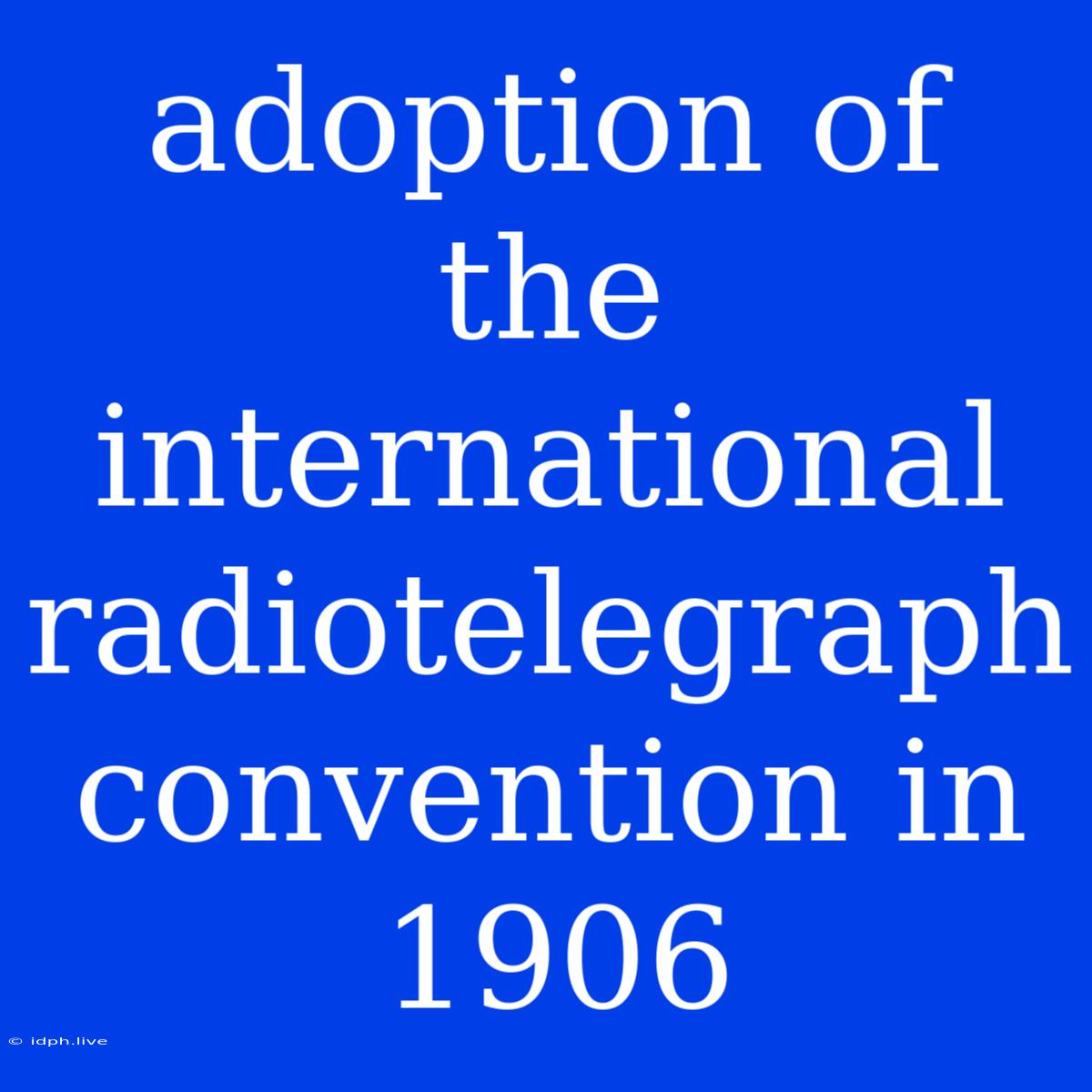The 1906 International Radiotelegraph Convention: A Landmark in Global Communication
The 1906 International Radiotelegraph Convention, held in Berlin, Germany, marked a pivotal moment in the development of international communication. This convention established a set of regulations that standardized the use of radiotelegraphy across the globe, paving the way for a more interconnected world.
The Need for Regulation
By the early 1900s, wireless telegraphy had become a revolutionary technology, transforming communication across vast distances. However, the rapid growth of radio transmission also brought about significant challenges.
- Frequency Interference: As more stations began transmitting, frequency interference became a major problem. Signals from different stations would collide, making clear communication impossible.
- Lack of Standardization: Different countries had adopted their own unique standards for radio equipment and operating procedures, creating a chaotic and incompatible system.
- Safety Concerns: The absence of international regulations raised concerns about the safety of maritime communication. Without standardized procedures, distress calls could go unanswered, leading to potential loss of life.
The 1906 convention addressed these issues by establishing a framework for global cooperation.
Key Provisions of the Convention
The convention included several important provisions that laid the groundwork for a more organized and efficient radio system:
1. Frequency Allocation: The convention established a system for allocating radio frequencies to different types of stations, such as maritime, aeronautical, and land-based communication. This helped to minimize interference and ensure that important communication channels remained clear.
2. Standardization of Equipment and Procedures: The convention standardized radio equipment, operational procedures, and distress signals. This made it easier for different countries to communicate with each other and ensured that distress calls could be understood and responded to.
3. International Cooperation: The convention established the International Bureau of Radiotelegraphy (later renamed the International Telecommunication Union - ITU) as a governing body responsible for overseeing and coordinating international radio communication. This body would play a crucial role in fostering collaboration and promoting the development of radio technology.
Impact and Legacy
The 1906 International Radiotelegraph Convention had a profound impact on the development of global communication.
- Increased Safety: The standardization of distress signals and procedures dramatically improved the safety of maritime communication. The ability to send and receive distress calls efficiently saved countless lives.
- Enhanced Interconnectivity: The convention facilitated greater interconnectivity between nations, fostering global trade and promoting diplomatic relations.
- Technological Advancements: The convention encouraged further technological advancements in radio communication. The need for standardization drove innovation and spurred the development of more efficient and reliable radio equipment.
The 1906 convention laid the foundation for a more organized and efficient global radio system. It served as a blueprint for future international agreements and established a framework for global cooperation that would continue to evolve and adapt to the rapidly changing world of telecommunications.

